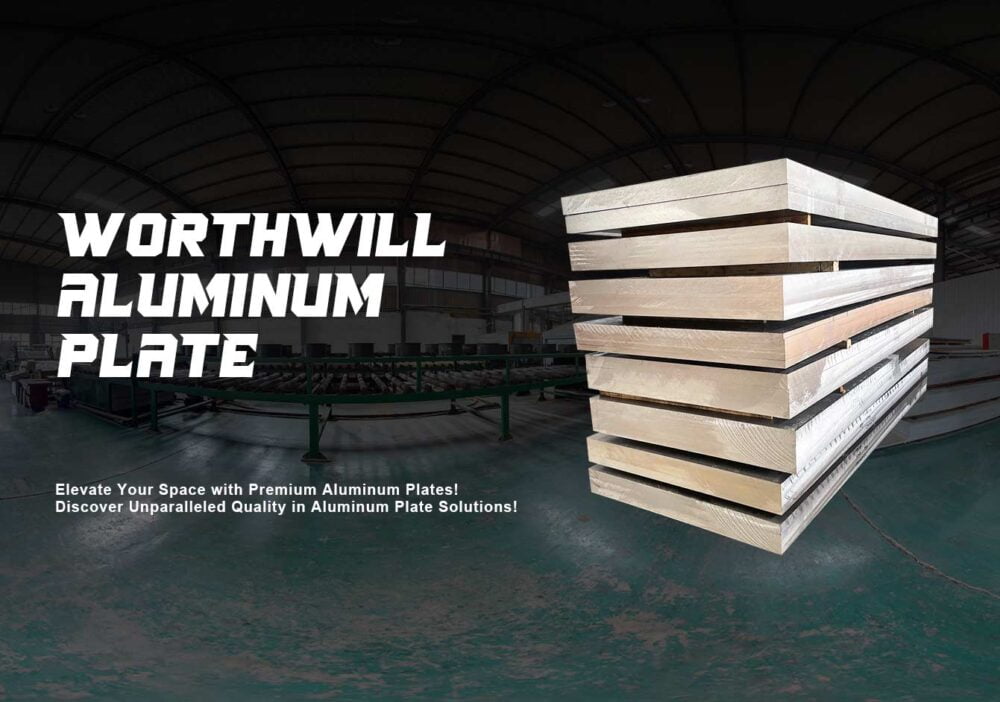Manufacturing Process of 3005 Aluminum Plate
In the modern industrial landscape, aluminum has become one of the most widely used metals due to its exceptional properties such as lightweight, corrosion resistance, and high strength-to-weight ratio. Henan Worthwill Industry Co., Ltd. takes pride in being a leading manufacturer of aluminum products, specializing in the production of 3005 aluminum plates. This article aims to provide an insightful overview of the manufacturing process of 3005 aluminum plates, shedding light on the various stages involved.
1.Aluminum Ingot Casting:
The manufacturing process of 3005 aluminum plates begins with the casting of aluminum ingots. High-quality aluminum ingots, composed primarily of aluminum alloy, are melted in a furnace at a controlled temperature. The molten metal is then poured into molds to form ingots of specific sizes and dimensions. This step ensures the initial material purity and consistency required for the subsequent processes.
2.Homogenization:
The casted aluminum ingots are subjected to a homogenization process. This involves heating the ingots to a specific temperature and holding them at that temperature for a predetermined duration. The purpose of homogenization is to eliminate any chemical segregation or non-uniformities within the ingots, resulting in a more uniform microstructure.


3.Hot Rolling:
After the homogenization process, the aluminum ingots are hot rolled to reduce their thickness and achieve the desired dimensions. The ingots are passed through a series of rolling mills, where they are subjected to high temperature and pressure. This process elongates the ingots and transforms them into long sheets or coils of aluminum known as hot-rolled aluminum plates.
4.Cold Rolling:
The hot-rolled aluminum plates are further processed through a cold rolling operation. This involves passing the plates through a series of rollers at room temperature to reduce their thickness. Cold rolling imparts improved dimensional accuracy, surface finish, and mechanical properties to the aluminum plates. It also enhances their strength and workability.
5.Annealing:
Following the cold rolling process, the aluminum plates undergo annealing. Annealing is a heat treatment process that involves heating the plates to a specific temperature and then gradually cooling them. This step relieves the internal stresses induced during cold rolling and improves the overall ductility and formability of the aluminum plates.


6.Surface Treatment:
To enhance the appearance and protect the aluminum plates from corrosion, various surface treatment methods are employed. These may include processes like anodizing, painting, or coating. Anodizing forms a protective oxide layer on the surface of the aluminum, while painting and coating provide an additional layer of protection and can also be used for decorative purposes.
7.Quality Inspection:
Before the final products are ready for shipment, strict quality inspections are conducted to ensure that the 3005 aluminum plates meet the required standards. These inspections may include dimensional measurements, visual inspections, mechanical property tests, and chemical composition analysis. Only after passing these inspections, the aluminum plates are deemed suitable for delivery to customers.


The manufacturing process of 3005 aluminum plates involves several crucial steps, starting from the casting of aluminum ingots to the final quality inspection. Henan Worthwill Industry Co., Ltd. employs advanced techniques and stringent quality control measures to ensure the production of high-quality aluminum plates that meet industry standards. By understanding the manufacturing process, customers can gain insight into the quality and reliability of the 3005 aluminum plates offered by Worthwill Industry.
Choose Worthwill Industry for your 3005 aluminum plate requirements, and you’ll receive products manufactured through a meticulous process that prioritizes quality and customer satisfaction.

